Sales Order
Let's now walk-through the transfer of data from Agiliron to QuickBooks Online - we will start with Sales Orders. These could be orders that have come in from customers in the various channels that you sell through OR one that your sales rep creates directly in the Agiliron CRM.
Managing Receivables
- In general, most people manage their sales orders/receivables in Agiliron and will want to sync sales orders after they are marked "Completed". The order is sent to QuickBooks as a "Sales Receipt" that the user can match to their deposits.
- The user can also manage the receivables in QuickBooks Online if preferred.
- If webhooks are enabled and the receivables will be managed in QuickBooks Online, once the sales order is synced from Agiliron, any Payments received on the Invoice in QuickBooks Online will update the sales order status in Agiliron to "Paid".
- Note: this feature is not turned on by default. Please navigate to Settings > QuickBooks and select the box next to "Enable QuickBooks Webhook (QuickBooks Online Only)" to turn this feature on.
Individual vs Summarized Transaction Sync
- Sales orders can be synced as individual orders or as summarized transactions. For example, if you have a large number of retail sales, you may not want to sync each transaction into QuickBooks Online. By enabling summary transaction sync, you can choose to sync orders as a single transaction.
- Note: This feature is not turned on by default. Please navigate to Settings > QuickBooks and select the box next to "Enable Summary Sync (QuickBooks Online Only)" to turn this feature on.
Syncing Sales Orders
Sales Orders can be found under the "Orders" tab on the left menu panel.
In the example shown below, we have Sales Order - Order 8594 :
- The Order has been marked as "Created".
Note: We have created a custom view for this module that displays the order status.
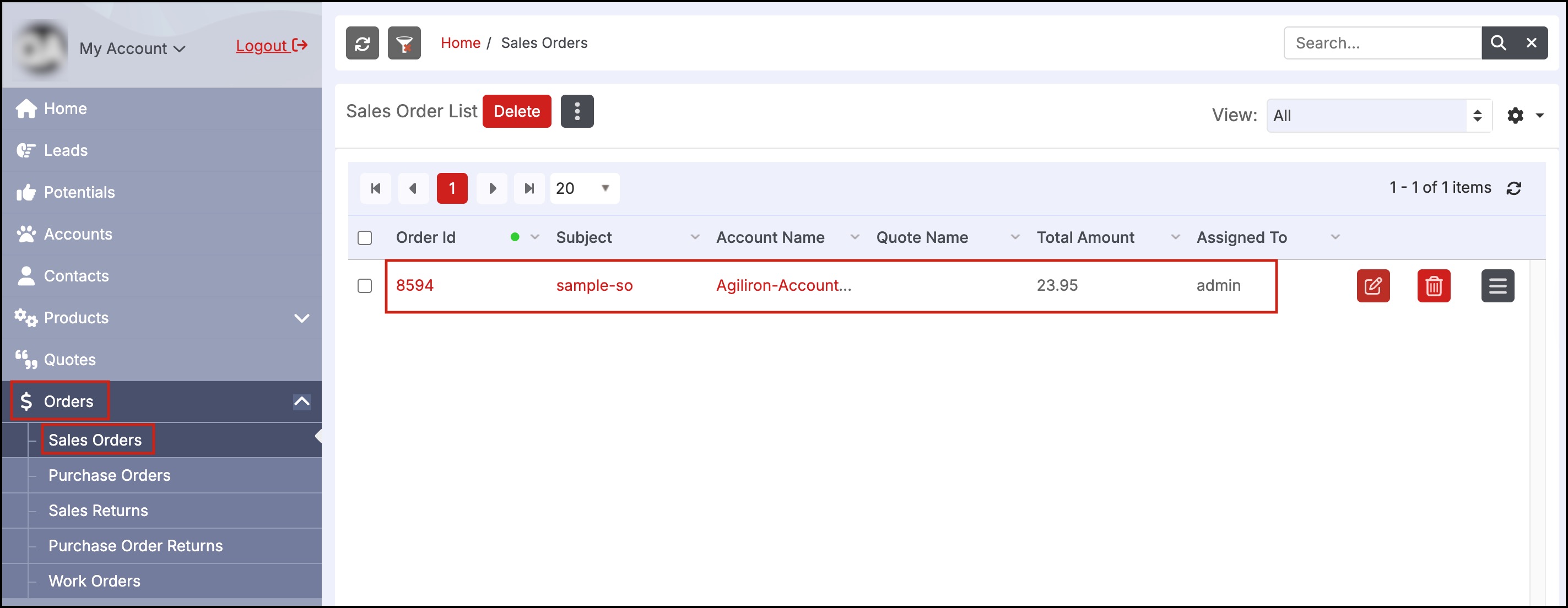
Details for Order are shown below.

Now let's go to "Accounting > QuickBooks Export". The "Advanced View" displays by default. In this tab, we have control over the orders we sync to QuickBooks.
- The Legacy View tab can be selected and will sync the first 30 orders in the list to QuickBooks; no selection can be made in this view.
- By default, the Sales Orders tab appears first in the Advanced View.
- Select the sales order(s) from the list to be synced.
- Click the "Sync to QuickBooks" button.
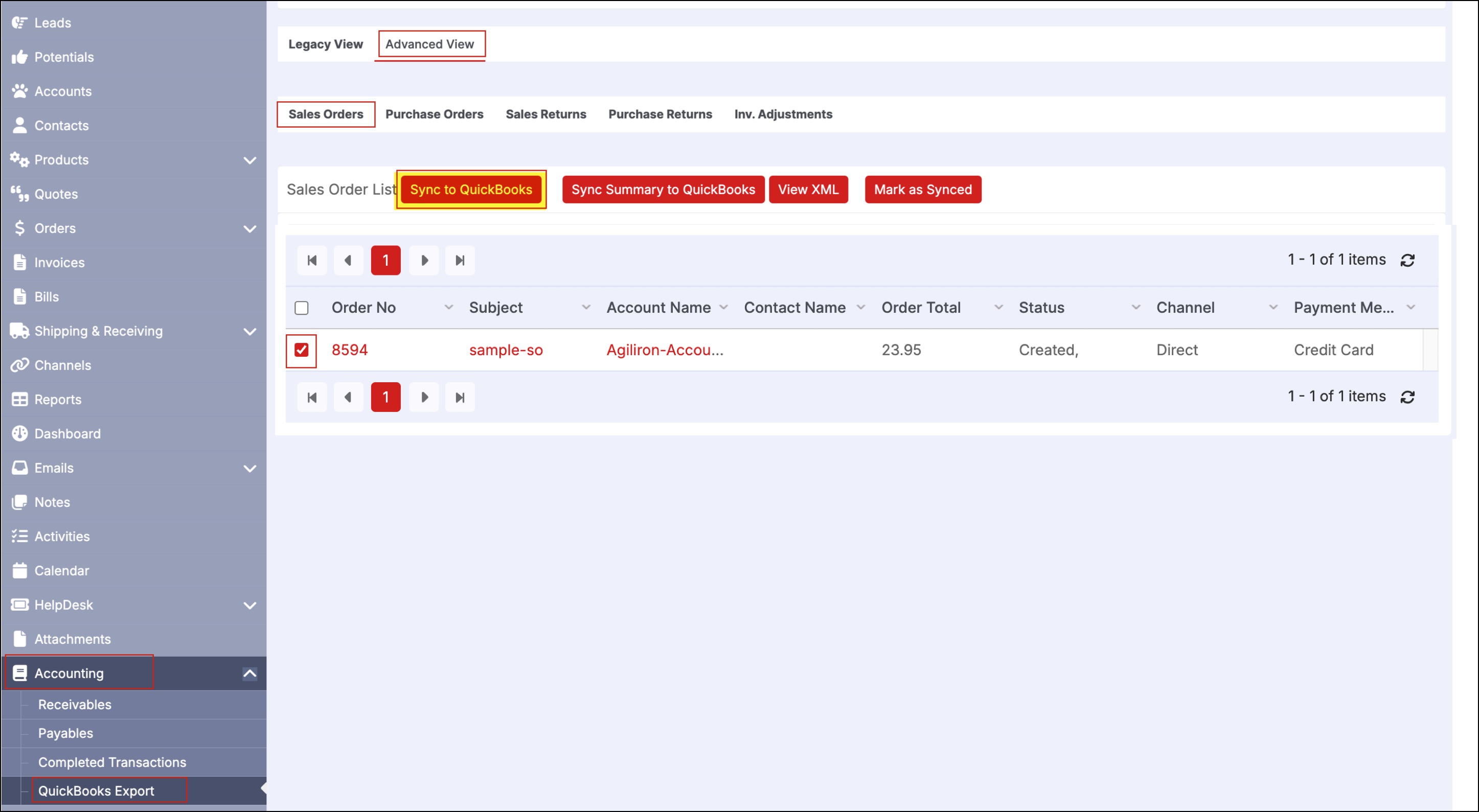
- Select the "OK" button on the pop-up box that displays.
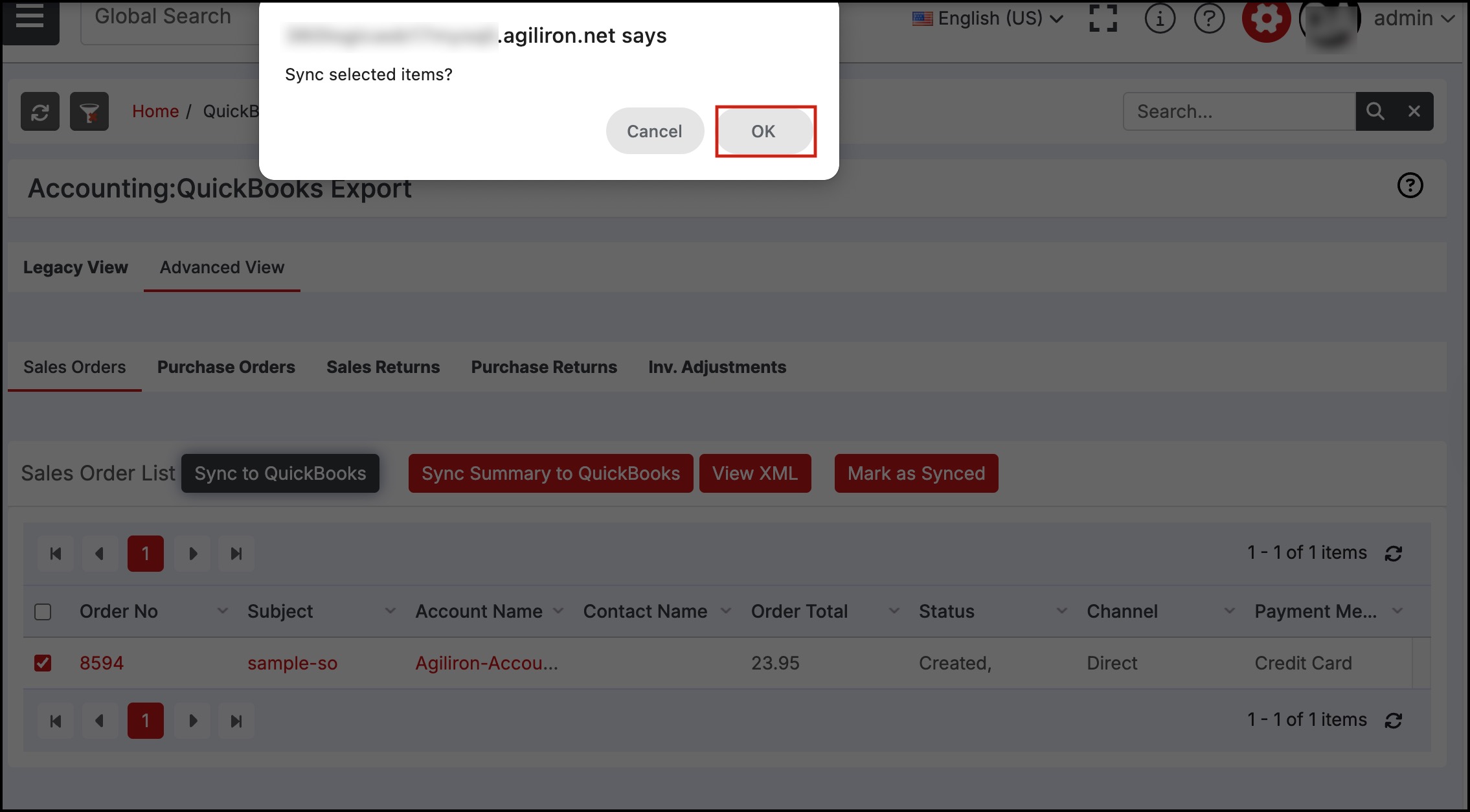
- A status window will appear with the results of the export. If no errors are found, the message will display successful results as shown in the image below.
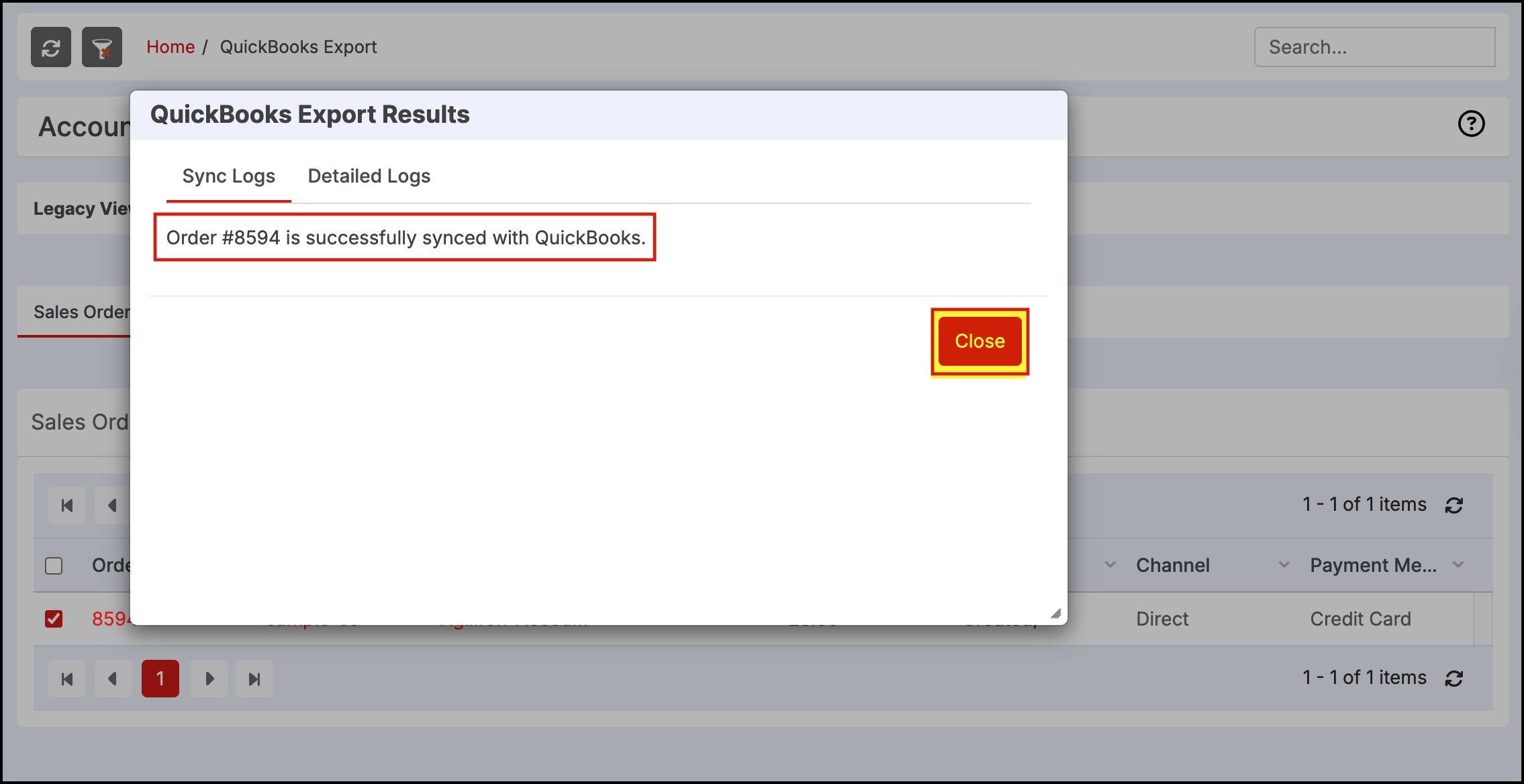
Let's shift now to QuickBooks Online and log in to your QuickBooks Online Account.
- Navigate to the "All Appa" tab.
- The sales orders are now displayed under "Sales & Get Paid -> Sales Transactions" listing.
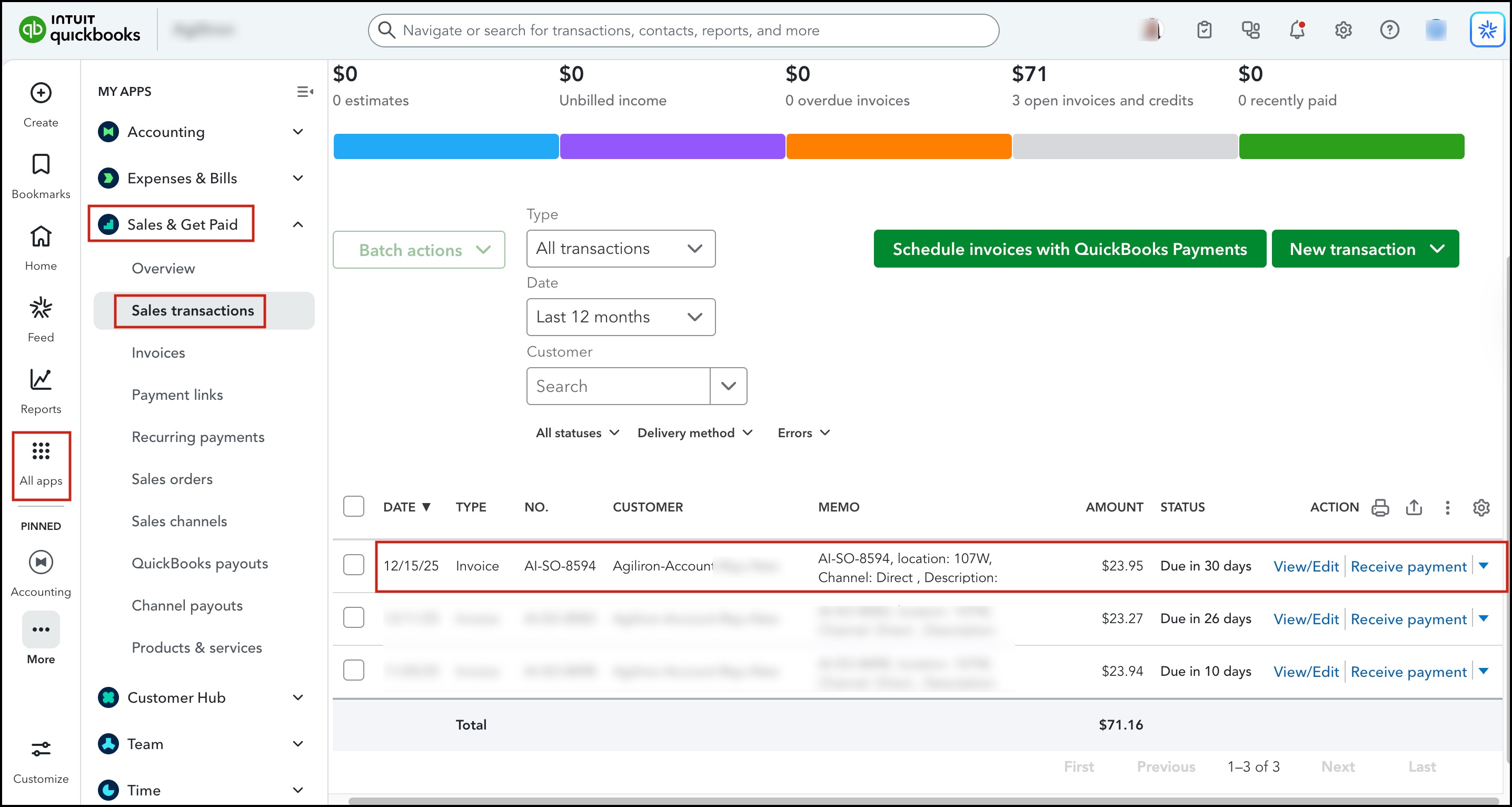
Let's look for a Sales Order that has NOT been Paid.
- You will notice that an Invoice has been created in QuickBooks since the order has not been paid.
- You can see that all the details have come in correctly - including the Customer Information, the Payment and Shipping Methods, Product Line items, Taxes, and other elements of the order.
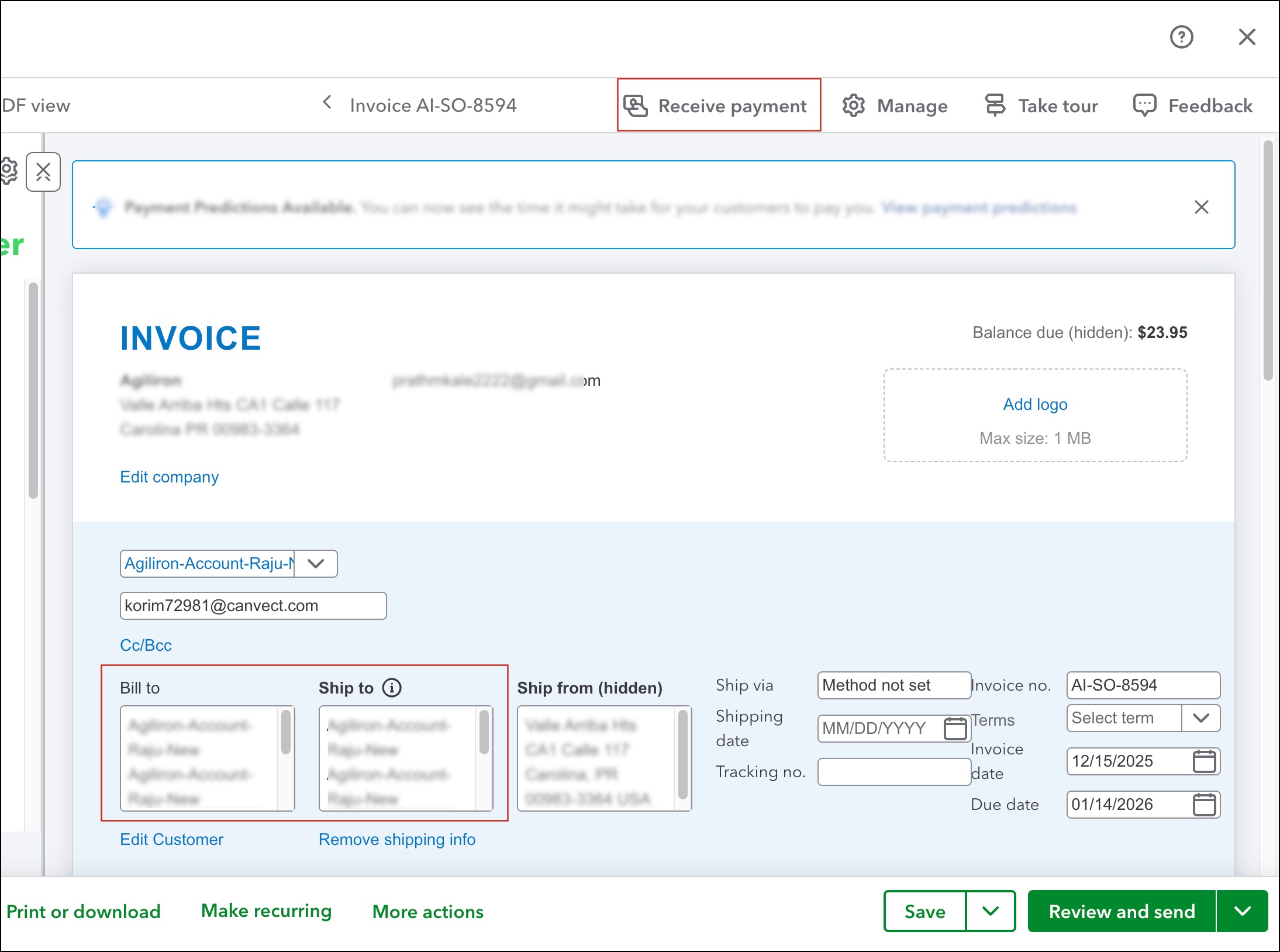

One final thing we will want to look at here is the adjustments made to COGS and Inventory Asset accounts for the order that just came in.
Let's go to the Chart of Accounts and bring up the Accounts Receivable - here you can click on View Register.
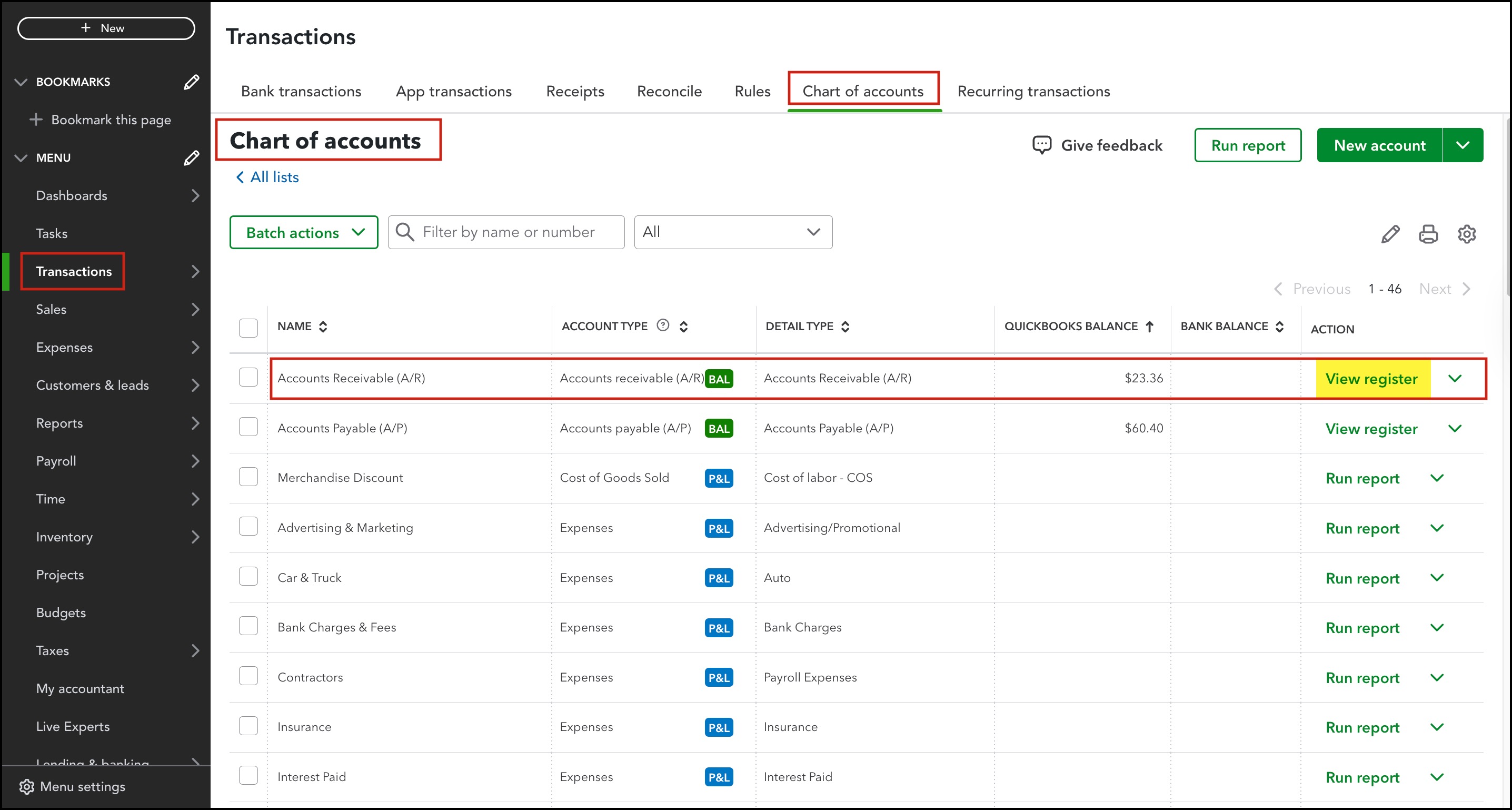
Now run the COGS report - here you can see entries that increase the Cost of Goods Sold account by the unit cost of the products sold.
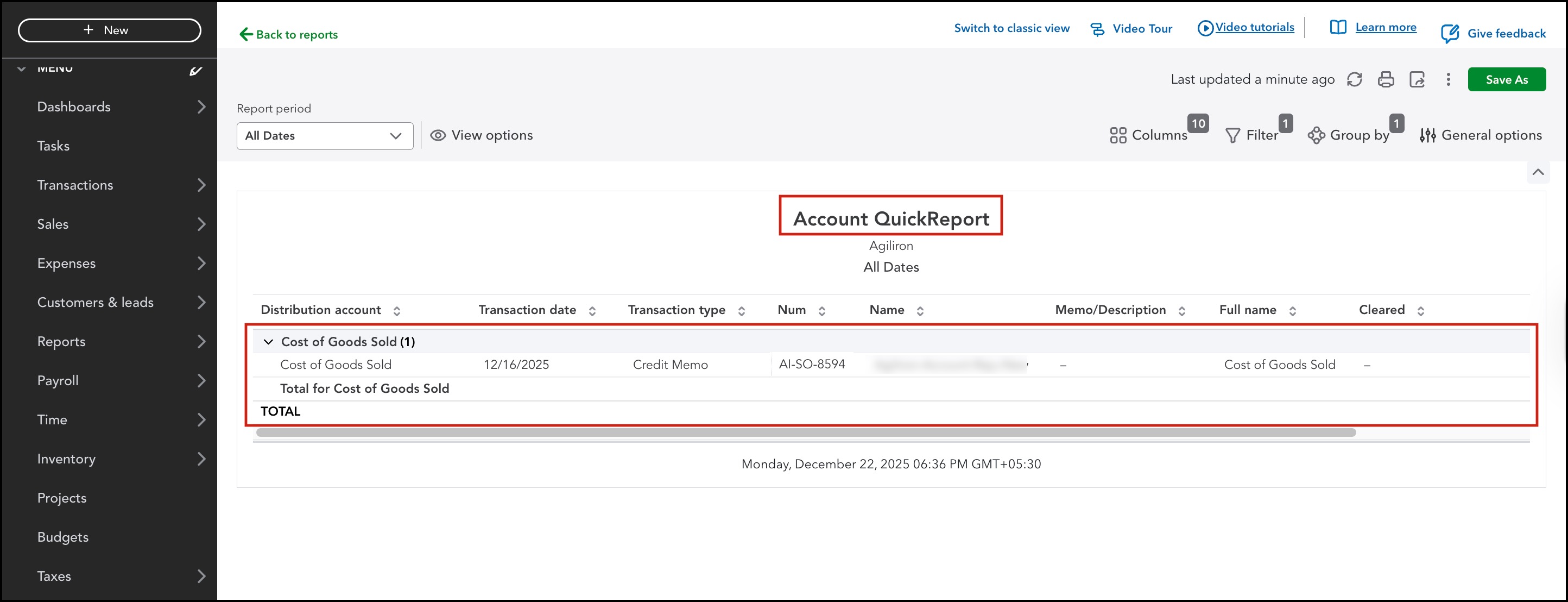
As an example, we have mapped the Cash Payments from Agiliron to Undeposited Funds in QuickBooks (in Agiliron, navigate toSettings > Payment Methods to find these mapping options).
The image below displays the Undeposited Funds register screen, where the payments received can be reconciled.
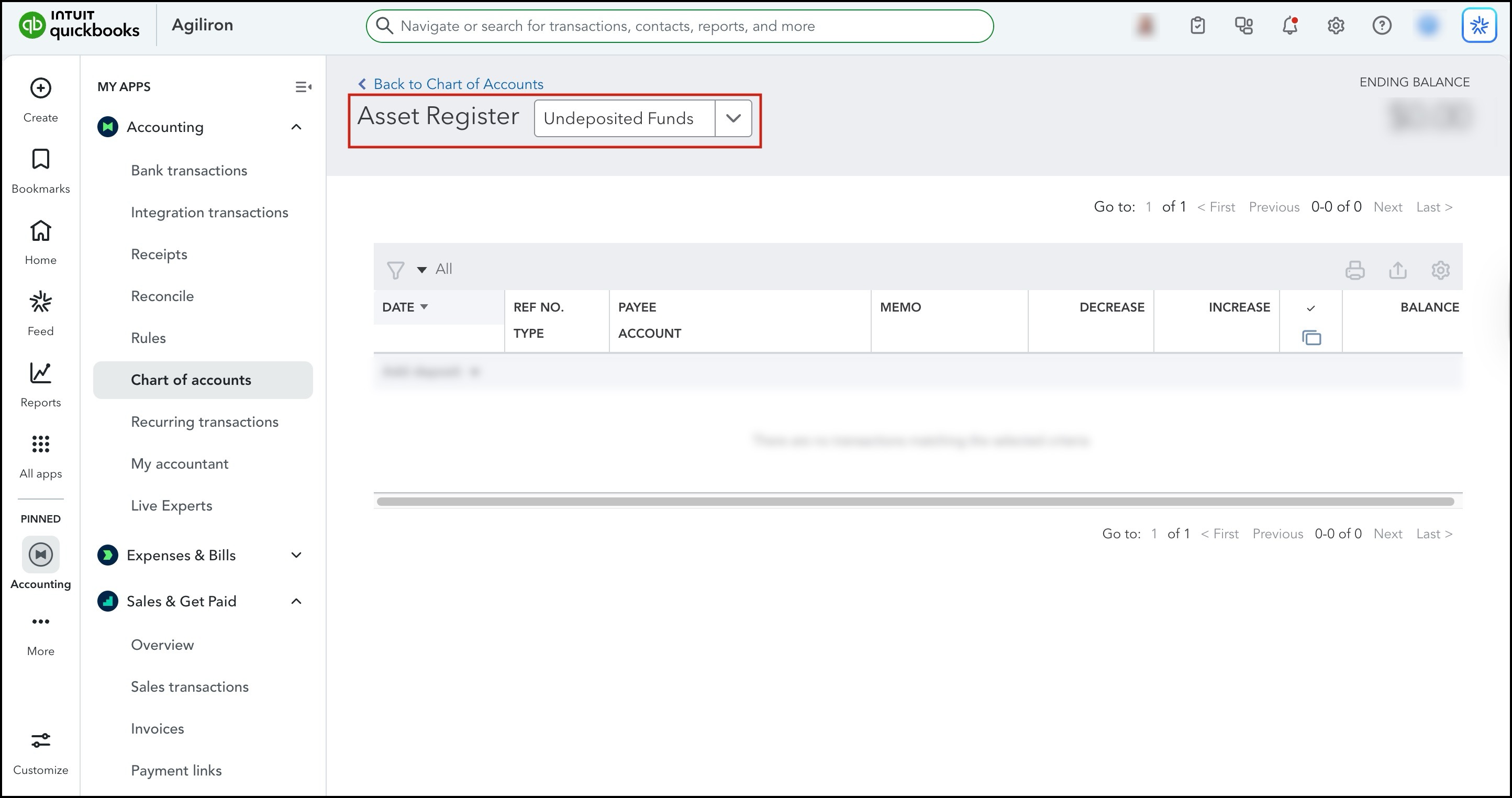
Updated 4 days ago
